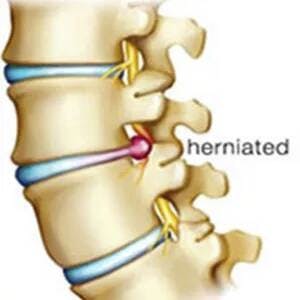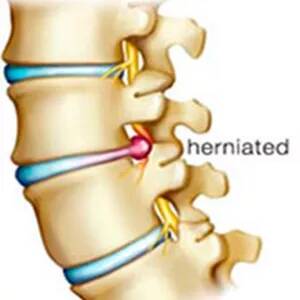Yes. Sciatica can be crippling. Going for a walk with your spouse or playing with your children or grandchildren can easily become something you can’t fathom doing again.
But it doesn’t have to be that way.
In most cases, sciatica is treatable without medications, injections or surgery. The key is figuring out the root cause of your pain and addressing it.
In the past we discussed what sciatica is. We also said that an MRI is often not needed, and sometimes even detrimental.
But how does the sciatic nerve become painful?
There are various ways pressure can be put on the nerve. It can become pinched in between two bones, squeezed in between tight muscles or inflamed if there is inflammation from some other injury.
In this article we will look at one of the most common causes of back pain and sciatica.
Herniated or Bulging Discs.
Although these are not the same thing…they are very similar so we will not go into the technical differences here.
Let’s start by explaining a little bit more about the spine.
The spine is made up of many bones, called vertebrae. There are 33 in all. The top 24 move. These are the Cervical (neck), Thoracic (mid/upper back), and Lumbar (low back). The Sacrum and coccyx are fused together in the very low part of the back so they don’t move.
In between each vertebrae is a disc. This disc is made up of fibers on the outside that give it strength and shape as well as a gel-like inside to give it shock absorption and height make sure the bones don’t bump into each other.
If the gel from the inside start to put pressure on the outside (sometimes caused by weakness of the outside fibers) the result can be pressure on the nerve…which will cause pain.

The key to understanding disc problems…is understanding how the disc is affected by many different factors.
One factor is the position of the body and how it changes the pressure from the disc. Because of the natural position of the spine and the available mobility, different positions will cause different amounts of pressure in different areas. Bending forward will be very different than bending backwards.
Most disc related problems are due to too much pressure being put out the back of the disc, pressing on the nerve.
Positions that cause you to bend forward will push the disc toward the back and increase the pressure on the nerve.
To try and visualize this, imagine a balloon full of water. If you press on the front of the balloon, the water is pushed to the back.
This is basically what is happening to the disc. When you bend forward there is pressure put in the front of the disc so the gel inside is pushed toward the back…leading to pressing on the nerve and causing pain.
The most common situation for this is sitting. When we sit our back tends to round causing more pressure on the front of the spine and pushing the disc toward our back.
If you have pain in sitting…your disc may likely be the culprit.
Another important factor in disc pain is age. The reason for this is simple. As we age our discs become less viscous or, "dried out". This is one of the main reasons we get shorter as we get older. (Nope. That’s not a myth…it really happens. )
For this reason, disc problems are most common in those between 30 and 50 years old.
Does this mean you can’t have a herniated disc if you are over 50?
Of course you can! However, because there is less fluid in the disc, there is naturally less pressure on the nerve so even if the disc is "bulging" it may not be the cause of your pain.
Remember the first point. The pain will be worse with sitting…and get better with standing. If that is not the case for you…your pain is likely not being caused by a herniated disc.
So, in summary. If you are under 50 and have pain with sitting…you likely (though not definitely) have a herniated or bulging disc at the root of your pain.
The good news is, you can usually treat these issues without any invasive procedure (like injections or medications). The right exercises and postural education along with workspace modification can usually lead to complete recovery.
But be careful. The wrong exercise can make you worse…so don’t try to learn this on your own. Consult a physical therapist to confirm your diagnosis and develop an exercise program to target your specific issues.
If you don’t think your pain is due to a herniated or bulging disc…we will cover another common cause of sciatica in our next article.

